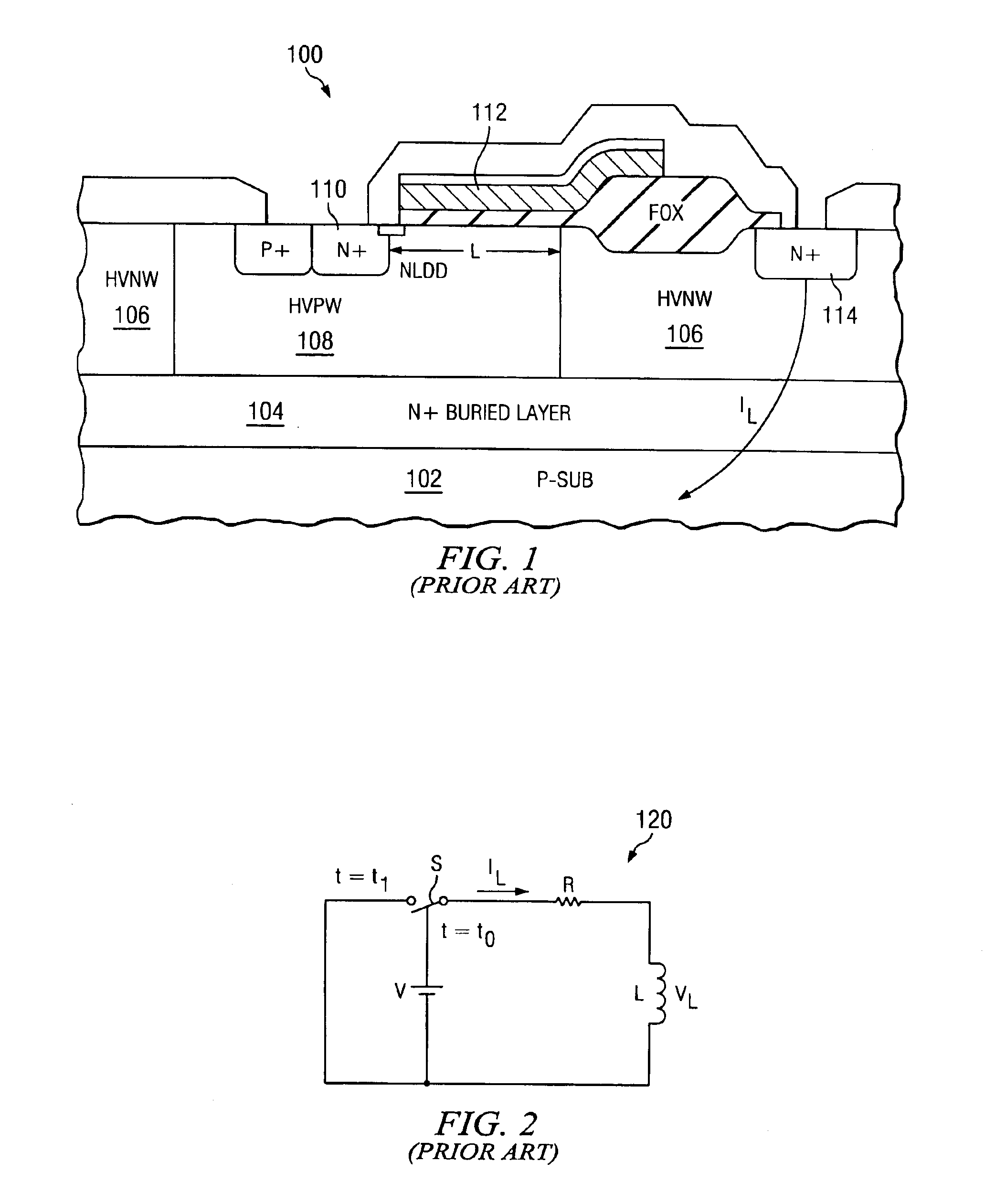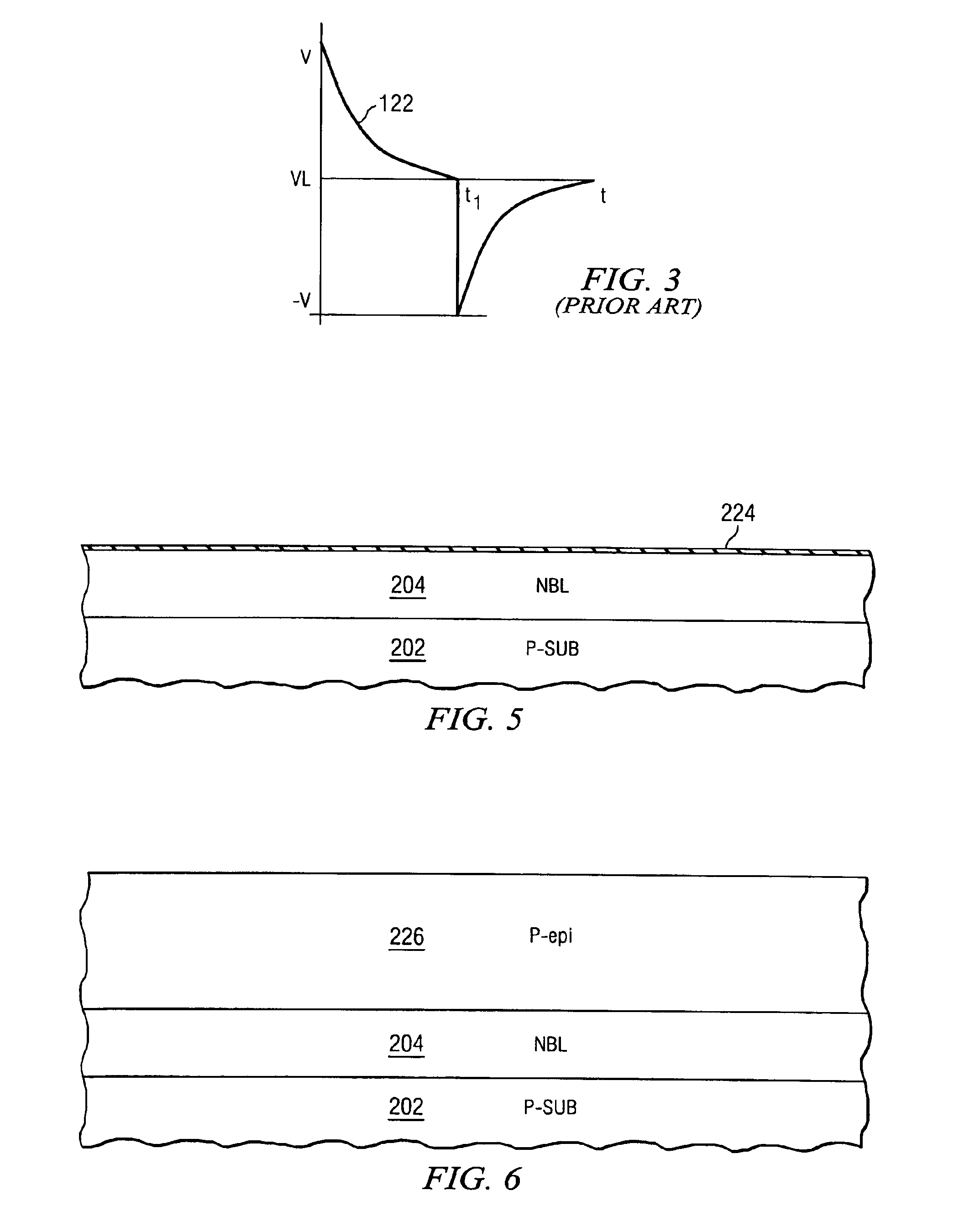LDMOS device with isolation guard rings
a technology of isolation guard rings and ldmos, which is applied in the direction of semiconductor devices, semiconductor/solid-state device details, electrical apparatus, etc., can solve the problems of degrading device performance, latching effect, and negative voltage creating leakage current, so as to prevent latching, early breakdown and reliability problems, the effect of leakage curren
- Summary
- Abstract
- Description
- Claims
- Application Information
AI Technical Summary
Benefits of technology
Problems solved by technology
Method used
Image
Examples
Embodiment Construction
[0021]The making and using of the presently preferred embodiments are discussed in detail below. It should be appreciated, however, that the present invention provides many applicable inventive concepts that can be embodied in a wide variety of specific contexts. The specific embodiments discussed are merely illustrative of specific ways to make and use the invention, and do not limit the scope of the invention.
[0022]The present invention will be described with respect to preferred embodiments in a specific context, namely an LDNMOS device, wherein an extended polysilicon gate is used on an extended drain field oxide to reduce surface electric fields (RESURF) and increase breakdown voltage. Embodiments of the invention may also be applied, however, to other LDMOS devices and structures. Although only one LDNMOS device is shown in each figure, there may be many LDNMOS devices formed in each step of the manufacturing process.
[0023]With reference to FIG. 4, therein is shown a cross-sec...
PUM
 Login to View More
Login to View More Abstract
Description
Claims
Application Information
 Login to View More
Login to View More - R&D
- Intellectual Property
- Life Sciences
- Materials
- Tech Scout
- Unparalleled Data Quality
- Higher Quality Content
- 60% Fewer Hallucinations
Browse by: Latest US Patents, China's latest patents, Technical Efficacy Thesaurus, Application Domain, Technology Topic, Popular Technical Reports.
© 2025 PatSnap. All rights reserved.Legal|Privacy policy|Modern Slavery Act Transparency Statement|Sitemap|About US| Contact US: help@patsnap.com



